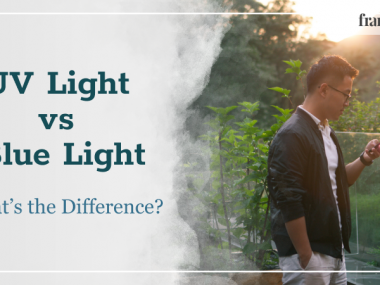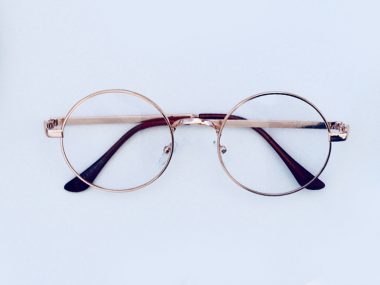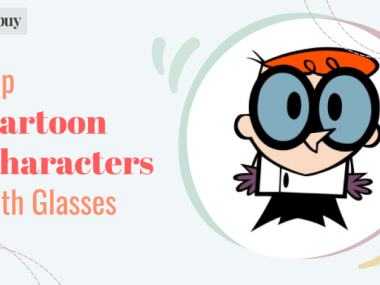Probably, it’s apparent till now that how digital devices are affecting our health, especially eye health.
Digital eye strain has become one of the most widespread medical conditions. The harmful blue light emitted from the screens affect the quality of the vision and also disrupt the sleep patterns. Evidently, the light is not good for human eyes but not all of the blue light is detrimental.
There is a mixed bag of myths and facts you need to know before you conclude whether the blue light is all bad or not. The connection of blue light with your eyes is far before the digital age.
There are some surprising myths and facts debunked about blue light:

Copy the below code to use the infographic on your site/blog post:
Myth: Blue light is only emitted from digital devices
Generally, the emission of blue light is associated with digital devices like smartphones, laptops, tablets etc.
Yes, these digital devices do emit a significant amount of harmful light but they are not the only source of blue light. In fact, blue light is found everywhere, indoor outdoor.
Fact: Sun is the main source of blue light
If digital devices and LED lights are artificial sources of blue light then which is the natural source? Sun is not only the natural but the biggest source of blue light. 25 to 30% of the daylight is made up of blue light.
The blue light emitted from the sun is actually 100 times greater than the digital devices. But since people spend more time viewing the digital screens, eye-health is getting affected.
Myth: All blue light is bad for your eyes
Not all blue light affects your vision. Yes, prolonged exposure can be horrible but a certain amount of blue light can actually benefit.
Like negative effects, blue light also has a lot of advantages on the human body. It is also said that blue light therapy is used to treat seasonal affective disorder which is a kind of depression.
Fact: Your eyes are not strong enough to block the blue light
The harmful UV rays emitted from the sun, only 1% of it reaches the light-sensitive retina whereas when it comes to blue light which is virtually visible, it directly reaches to retina passing through cornea and lens.
As compared to UV light, blue light more easily reaches the human eyes. You usually wear sunglasses to protect your eyes from the sun but what about the blue light which you are exposed to on regular basis?
Myth: There is nothing that can be done to protect the eyes from blue light
Fortunately, it’s a myth! In this technologically driven world, it is almost impossible to live without digital devices and its negative effects but there are also many ways to protect your eyes. Give your eyes a 20 seconds break every 20 minutes from the computer.
Use blue light filter available for mobile screens, computer screens, tablets. Just apply the filter on the device screen and eliminate digital eye strain. You can also opt for computer glasses or blue light glasses that comes with blue block coating.
Fact: Blue light increase the chances of macular degeneration
Prolonged exposure to blue light triggers the retina, damages the retinal cells and lead to age-related macular degeneration which can further lead to permanent vision loss.
Digital screens contain additional blue light that drastically increases the risk of macular degeneration.
Myth: Blinking doesn’t help
Blinking is natural but we often forget while staring at the digital devices. The more often you blink, the more you will be relieved from the strain caused due to blue light. Blink and take a break, it is effective.
Fact: Blue light protection is more significant after cataract surgery
After cataract surgery, the eye surgeon generally replaces the cloudy natural lens with intraocular lens (IOL). You need to confirm with the surgeon whether the lens can protect your eyes from the blue light emitted from digital screens.
However, if you are likely spending a good amount of time using digital devices then it is wise to go for intraocular lens with blue light filtering.
Myth: Staring at mobile screens doesn’t damage your eyes
It is actually not even a myth but a fool trick to convince yourself. Like any other digital device, even mobile devices/smartphones emit blue light. It will hurt and cause your eyes similar discomfort as monitors.
In fact, you spend more time on smartphones, hence it’s better to wear blue-filtering glasses while using smartphones.
Fact: Blue light causes sleep deprivation/disorder
As per Association of Optometrists, the blue light emitting digital devices when used in evening can mostly affect the circadian cycle and disrupt the sleep. Using digital devices before sleep time suppresses the melatonin.
This eventually leads to daytime sleepiness and make you feel tired and inattentive. It is better to avoid using electronic devices at least 3 to 4 hours before bed.
Myth: All devices emit equal blue light
Well, all devices do emit blue light but the level of emission mostly varies. According to a survey smartphones are the most commonly used digital device and also most of the blue light is emitted from smartphones.
Since smartphones are the more closely held digital devices, the level of exposure is high and there is increased risk of retinal damage.
Fact: Blue light is more dangerous than UV
Blue light directly passes through the back of the eye which triggers the nerve and causes eye strain. Our natural eye filter cannot protect the vision from the harmful light, since we are more exposed to it than the UV, it is proven to be more dangerous too.
Considering the myths and facts, one thing is for sure, you should be worried about the harmful blue light. Your eyes are not designed to tolerate the negative impact of the artificial blue light.
Home or office, if you are spending more than 6 to 8 hours of screen time then it’s wise to go for any blue light protection options or consult your eye doctor for a suitable solution.







